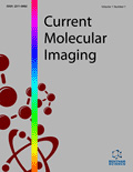Abstract
Myocardial perfusion imaging (MPI) using single-photon emission computed tomography (SPECT) has widespread clinical use because of its well-documented diagnostic accuracy for detecting coronary artery disease (CAD).
Cardiac SPECT imaging needs to become shorter and use lower radiation doses in order to compete with other available noninvasive imaging modalities. Recently introduced cadmium zinc telluride (CZT) SPECT cameras have the potential to achieve both of these goals. New SPECT CZT camera technology drastically reduces imaging time for patients while also reducing their radiation exposure compared to previously used technologies, without any loss of image quality.
This article describes these innovations, which provide a strong foundation for the continued success of myocardial perfusion SPECT.
Keywords: Myocardial perfusion imaging, cardiac SPECT, CZT, radiation, gamma camera.
 10
10

